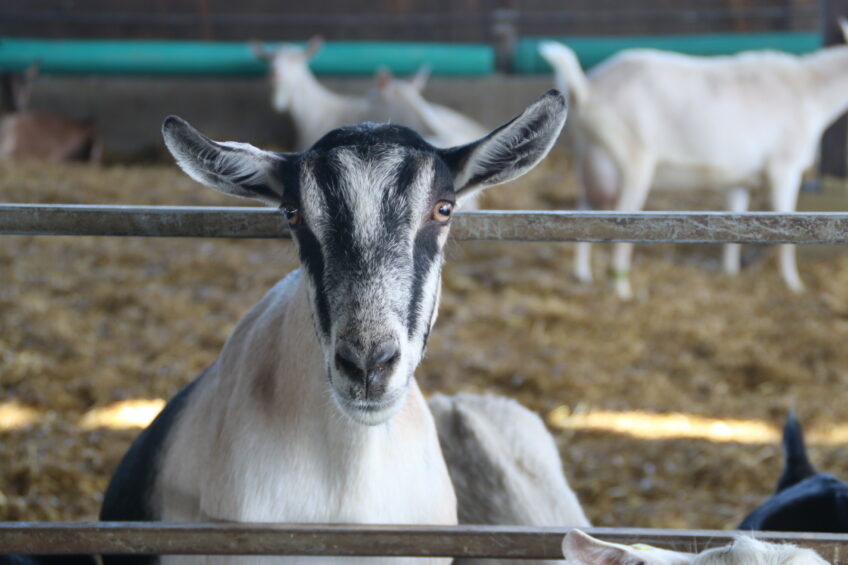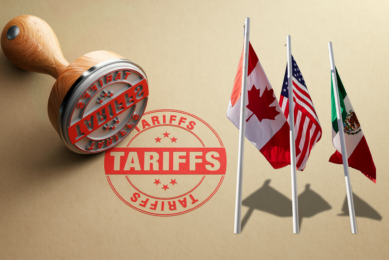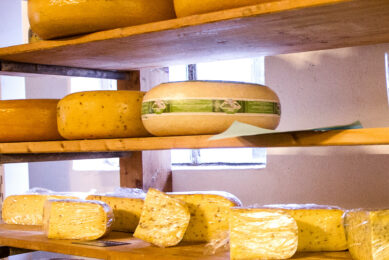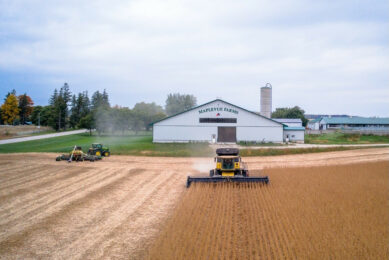Dairy goat farming: Attractive for Canadians

Dairy goats are a relatively new phenomenon in Canada. Dairy Global visited the goat farm of Jason Lyons. One of the biggest in the region.
As youngsters, many of us will recall being read a Norwegian nursery rhyme entitled “Three Billy Goats Gruff”, which describes the adventures of three goats searching for a new pasture. Goats also have a royal connection, as a goat was presented to the 1st Battalion Royal Welsh Fusiliers by Queen Victoria in 1884 and to this day leads out the Regiment on important ceremonial parades, although of course most goats don’t get to attain such an important role in life.
Alternative to cow milk
However, in some parts of the world, goat meat and milk is a very important part if the daily diet. It’s significant that three-quarters of the global population eat goat meat and many Indians and Pakistanis rely on goats for their milk. Naturally cheese can be made from goat’s milk and many consumers are attracted to it as it is much lower in energy than dairy cheese plus it’s easier to digest. This is why goats’ cheese is becoming more popular in England for example. Some large UK supermarkets switched from selling only one brand of goat’s cheese. Today it is often more than three or four different brands, sourced from around the UK and often imported from France.
Saanens and Alpine goats
Jason Lyons grew up on the family dairy farm in Western Ontario, Canada and could have entered the family business but preferred to train and work as a truck mechanic. When Lyons’ father was approaching retirement age Jason was invited home but wasn’t keen on the idea of being tied to a cow’s tail for the rest of his life, so instead his father suggested he tried working with goats and the rest, as they say, is history. Today, Jason Lyons milks 450 goats along with a part time employee on his farm near Brampton. His milk is sold for cheese manufacture. His goats are a combination of Saanens and Alpines, which yield well. Peak demand for cheese is in the autumn, as there is good business to be done around Christmas. In addition to his lactating goats, Lyons also rears 250 young stock.
Canadian goat farming in its infancy
“Goat farming is very much in its infancy in Canada, with Ontario ranking number one and Quebec being second in terms of numbers,” explained Lyons. “People are attracted into the industry by the lack of quotas, but there is a need for protocols, plus there is very little infrastructure in place in comparison with the dairy industry, although we do have a Canadian Goat Association in place. The lack of excessive regulation is refreshing but one downside is the lack of research being carried out especially in relation to nutrition.” Lyons pays realistic prices for his bucks. A top quality buck costs $ CAN1,700 (€ 1,180), with the kids first being served at 10 months of age. Lactations lasts 1.5 to 2 years.
Rotary parlours: New trend for goats
The does produce 11,000 litres / lactation and get culled after five years. Lyons reckons he needs yields of 10,000 litres to make money although the average in Ontario is around 6-7,000 litres, so he is doing a great job. He milks his does through a 20:20 converted dairy parlour at a rate of 250 per hour with each female producing an average of 4-5 litres/ day. ”Rotary parlours are a new trend,” added Lyons. Most of the goats are housed in a former cowshed, rented from family relatives, at a stocking density of 1.4m2/ goat and a trough space allowance of 31cm per animal. Talking of relatives, Lyons’ wife is a teacher but helps out at kidding time and other times when extra help is needed. The shed is too square for Lyons’ liking and he would eventually like to build a new barn, subject to passing planning hurdles and of course, when finances allow. His new barn would be rectangular, which would allow more trough space per goat.
Goats are selective eaters
All the feed: hay (alfalfa, timothy and bromegrass), concentrates, including steamed flaked corn, oats and straw, is all bought in. Concentrates are fed in pellet form, as goats are selective eaters and if given a loose mix feed would simply pick out the most palatable ingredients and leave the rest. The aim is to provide the goats with an 18-20% CP ration and baking soda is provided as a buffering agent for the rumen.
High mortality rates: kids
Raising the kids is very difficult with mortality running from 15-20%. Losses are due to E. coli and pneumonia and so the kids are reared in shelters, which are designed to provide good ventilation. Caprine Arthritis Encaphalitis (CAE), which fortunately does not affect humans, is passed on through infected colostrum, milk and blood. Hence, colostrum is heat-treated and formic acid is added to reduce the gut pH. A new needle is used for each injection to prevent infection being passed on through the blood. Goats are wilful creatures and it’s easy to see why Lyons turned his back on large lumbering bovines to make a career working with such fascinating animals.
Goats are sustainable
Monogastrics compete with humans for cereals and cows and cattle need good quality roughage to perform well, to produce adequate amounts of milk and meat. There must be millions of hectares of scrub land which is of no feed value to our intensively and highly bred cows and beef animals, but “Billy Goat Gruff” and his sisters can thrive on such vegetation and they can make a very useful contribution to feeding our increasingly Hungry Planet come 2050. Next to that, goats’ milk of course is a component of the “squeaky” cheese, halloumi. Cyprus is currently pushing for Protected Status for this special cheese, although ironically the country’s goat population may have to be increased as currently Cypriot halloumi seemingly contains too much cow’s milk to qualify for Protected Status (PDO). The future is bright for dairy products from goats.
Join 13,000+ subscribers
Subscribe to our newsletter to stay updated about all the need-to-know content in the dairy sector, two times a week.










